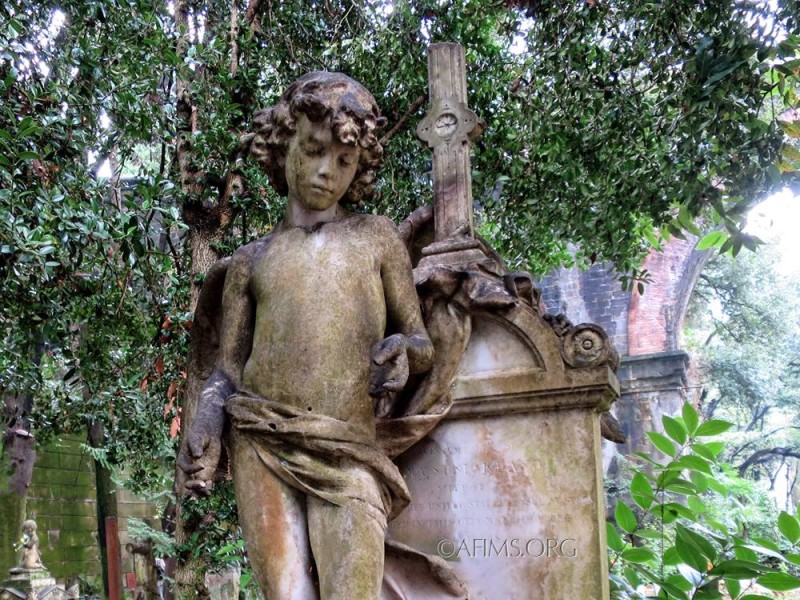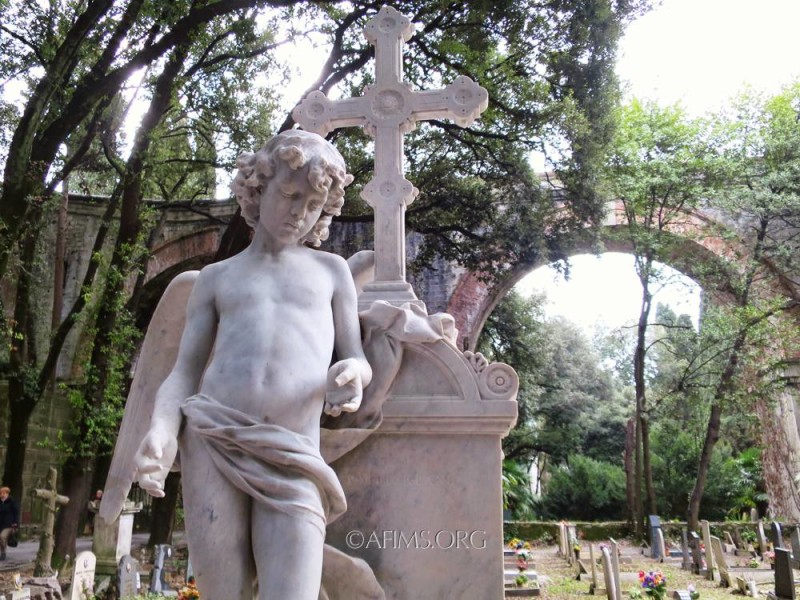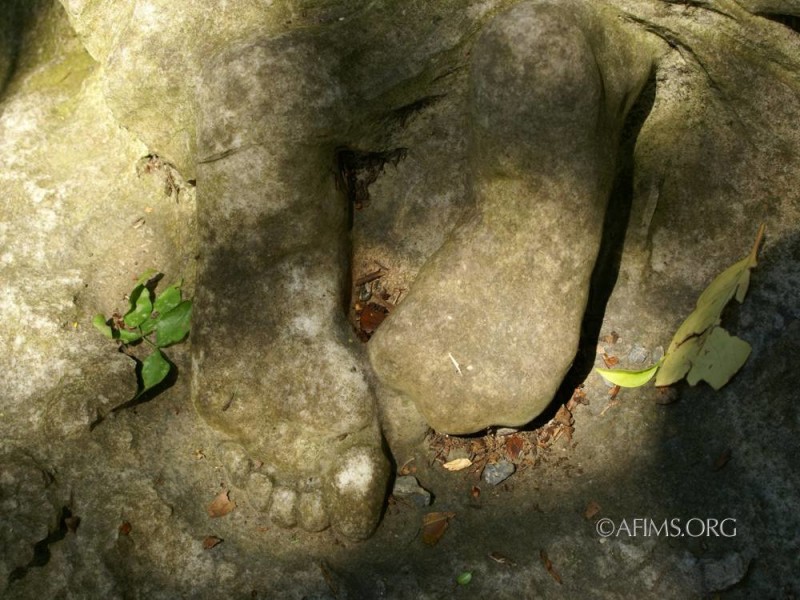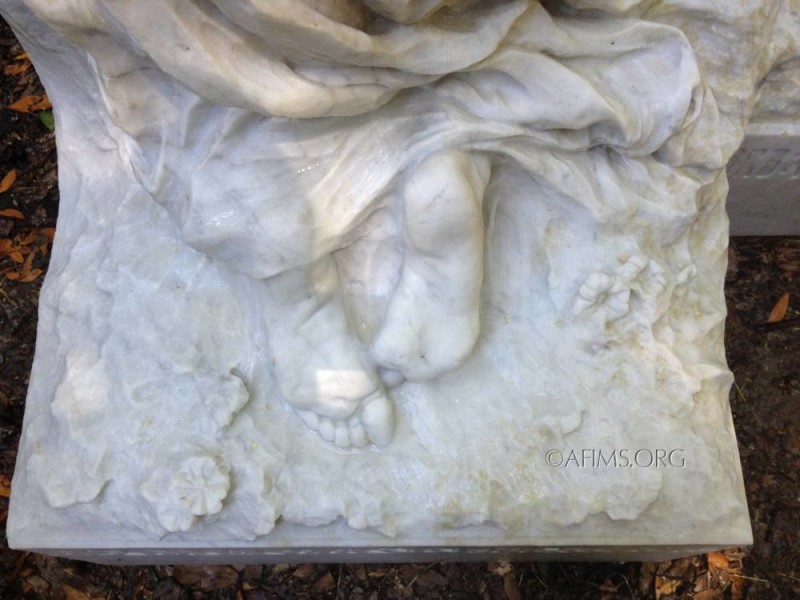With the guidance of art historians and preservation professionals from the Soprintendenza Archeologia Belle Arti e Paesaggio, the agency that oversees the artistic heritage of the City of Genoa., we select exceptional art restorers to preserve these masterpieces. Every step of the restoration process is carefully overseen and is executed with care and forethought. Learn how your donation helps our mission.
How are these works restored?
The restorers we work with at Staglieno are very careful to not over clean the sculptures. They remove the biological growth and black crust and chemical deposits from pollution that eat away at the surface of the marble, but they leave some of the natural patina. The end result is to preserve the sculpture for many more years without trying to make it look too pristine and sterile.
How are these masterpieces restored? There are many steps in the restoration process. We start with specifications written by art restoration specialists from the provincial department that oversees the art work, the Soprintendenza Archeologia Belle Arti e Paesaggio. We issue a request for proposals to 5 or 6 different restoration firms with experience in this type of work, and select the most appropriate proposal. While price is a factor in the selection, we also need to ensure the chosen proposal is thorough, thoughtful and complete.
Typically work will begin with lightly brushing off dust and debris, then cleaning with cotton swabs and deionized water. Some areas are then gently washed with mild detergents, and poultices with biocides are applied to draw out the microorganisms and kill bacteria, mold and mildew. The poultice also serves to remove salts from the surface. Some cracks and flaking may be repaired or reinforced and broken pieces reattached. The final stage is application of a water repellent sealer, which is not permanent; it has a two to three year lifespan. We schedule follow-up maintenance including a light cleaning and reapplication of the sealer.
In some cases, like the Fletcher Memorial by Luigi Brizzolara, a laser is used for some of the cleaning. The laser is calibrated to the exact wavelength that causes the dirt to come off without the device touching or harming the marble. This project was also the first time in Italy that lasers were used not just for cleaning, but also as a biocide on a marble restoration, and it proved 100% successful in this application.




